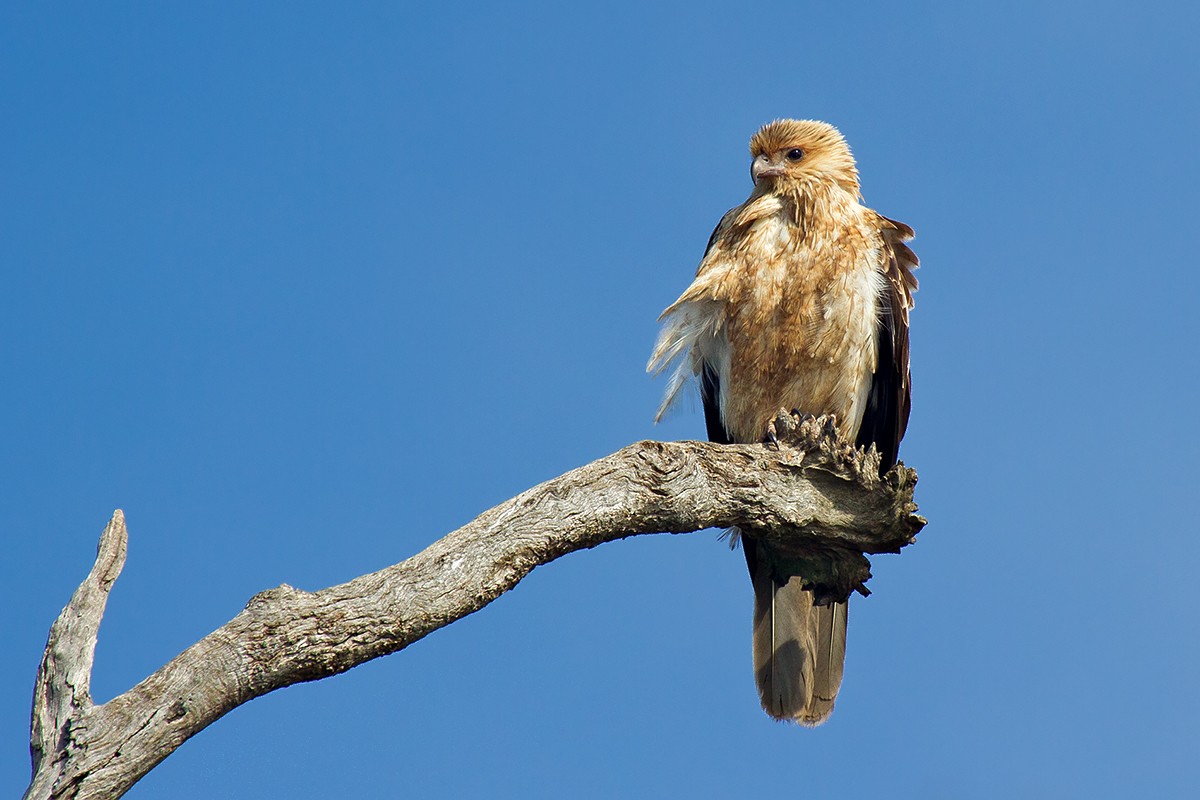Whistling Kite
A species of Haliastur Kites Scientific name : Haliastur sphenurus Genus : Haliastur Kites
Whistling Kite, A species of Haliastur Kites
Botanical name: Haliastur sphenurus
Genus: Haliastur Kites
Content
Description People often ask General Info
Description
The whistling kite ranges in size from 50–60 cm (20–24 in), with a wingspan between 123–146 cm (48–57 in). Weights range from 380–1,050 g (13–37 oz) an average of 600g-750g for males and 750g-1000g for females. As with most raptors, females are larger and heavier than males; though there is considerable overlap between the sexes, females can be up to 21% larger and 42% heavier. Southern birds are also larger than those found in the tropics. Male and female plumages are the same. Adult birds are a pale buff on the head, breast and tail, with browner wings and black flight feathers. Immature birds are a heavily streaked reddish-brown with prominent pale spots on the wings. Throughout their lives, whistling kites have bone-colored legs and feet, which are unfeathered. Overall, the whistling kite looks small-headed and long-tailed, with wingtips falling well short of the tail tip when the bird is perched. Though its legs are short, the bird walks easily on the ground. Whistling kites soar on slightly bowed wings, with their long flight feathers often well-splayed. The striking pattern on their underwings is distinctive. 
Size
59 cm
Life Expectancy
11 years
Nest Placement
Tree
Feeding Habits
Whistling Kite consume a wide range of prey including mammals, birds, fish, reptiles, amphibians, insects, and carrion. They adapt by scavenging or hunting, taking food from ground, water, or air, and even pirating from other birds. Whistling Kite exploit various opportunities like roadkill and fires to find meals.
Habitat
Whistling Kite thrives in open or lightly wooded terrains, often adjacent to water bodies, from sea level to 1,400 meters, preferring elevations below 800 meters. Habitats range from terrestrial to marine wetlands and human-altered areas like farms and airstrips, given proximal water. Woodlands near rivers and monsoon forests are typical nesting sites. Some populations may exhibit nomadic tendencies, moving across broad areas in response to seasons.
Dite type
Carnivorous
People often ask
General Info
Feeding Habits
Bird food type
Behavior
Whistling kites tend to be found singly or in pairs, but sometimes gather in larger groups, particularly during nomadic movements, at roost sites and at sources of plentiful food. 
Species Status
Not globally threatened.
